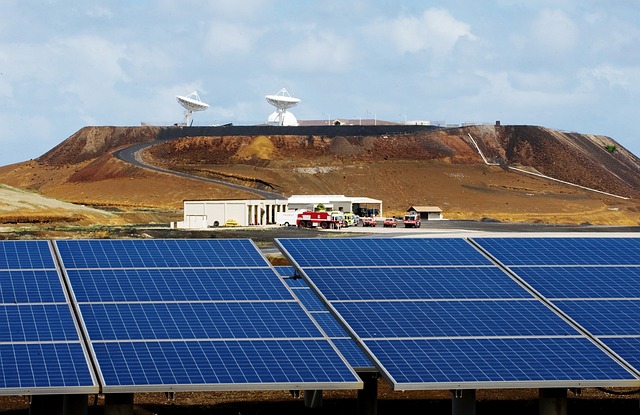[Reuters Analysis] US clean energy capacity growth gets slower but wider in 2025: Maguire


By Gavin Maguire
LITTLETON, Colorado, Aug 13 (Reuters) - The pace of new capacity of U.S. solar, wind and battery systems has slowed nationally and in key states this year, hurting clean energy sector sentiment. But climate trackers can take heart from the continued growth outside Texas and California.
Combined installations of solar, wind and battery storage systems are on track to climb by around 7% in 2025 from the year before, according to data compiled by energy data platform Cleanview as of mid-2025.
That would mark the smallest year-over-year percentage expansion in the footprint of those energy technologies in over a decade, and comes amid aggressive cuts to support for clean power since U.S. President Donald Trump returned to office.
Climate advocates are particularly alarmed by the slowing in capacity growth in Texas and California, which account for over a third of national combined clean energy capacity but have grown by less than the national average this year.
But while there's plenty for clean energy trackers to be concerned about, there are signs that expansions continue outside of the main clean energy states to suggest the U.S. energy transition may be widening even as it slows in 2025.
SOLAR SLOWDOWN
Solar power capacity has been the fastest-growing form of clean power generation over the past five years, with national capacity expanding by 181% since 2020 to roughly 136,250 megawatts (MW) as of mid 2025, Cleanview data shows.
Total U.S. solar capacity has grown by an annual average of 27% since 2020, but so far in 2025 has only grown by 10% from 2024's total due to the sharp slowdown in developer activity.
The growth pace of the combined solar installations in California and Texas - the top two solar producing states - was 8% so far in 2025, and so was less than the national average due mainly to the lowest capacity growth in California on record.
Capacity growth in Florida, Nevada, Georgia and Virginia - all top 10 solar states - was also well below the national average.
However, Arizona, Ohio and Indiana, which are also in the top 10 list, posted growth rates of well over twice the national average to sustain the overall national growth trend.
WIND WOES
Wind power capacity growth has been slowing steadily in recent years due to cost increases for parts and labour, as well as difficulties in securing new suitable sites for wind farms.
Even so, the 1.8% expansion in total U.S. wind capacity so far this year is the smallest annual increase in the U.S. wind power footprint since at least 2010.
Among the 10 largest wind power producing states, only Texas (+2.1%) and Illinois (+4.5%) recorded growth in excess of the national average this year, while seven of the top ten states have so far recorded no increase in capacity versus 2024 at all.
That said, states outside the 10 largest wind power producers have expanded capacity by 3% so far this year from 2024's total, which is helping the national total tick higher even as the core wind states tread water.
BATTERY BUFFERS
Battery energy storage systems (BESS) have been the fastest-growing segment of the clean energy space in recent years, and continue to expand at a faster pace than wind and solar farms in 2025.
Total installed utility-scale BESS capacity was 33,212 MW as of mid-2025, Cleanview data shows, which is up 22% from 2024's total.
Again, California and Texas have posted growth rates below the national average so far in 2025, of 11% and 14% respectively.
However, Arizona, Nevada, Massachusetts and Idaho - all top 10 states for battery capacity - have registered capacity increases of far more than the national average.
And with federal support for battery systems still available under the Trump administration even as incentives for solar and wind power are slashed, batteries look set to remain the leading growth driver of U.S. clean energy capacity going forward.
COMBINED TAKEAWAYS
Combined capacity of solar, wind and battery systems hit 325,700 MW as of mid-2025, which marks a 7% or 20,700 MW rise from a year ago.
Among the 10 largest states by combined solar, wind and battery capacity, Texas brought on the largest volume, with a 5,250 MW rise, followed by Arizona, California and Indiana.
Florida and Illinois also increased their overall clean energy footprints, mainly through battery systems, and look set to remain attractive markets for battery developers going forward given the need for local utilities to ease grid strain.
Batteries will also remain in high demand in areas with large volumes of surplus solar generation that utilities want to harness for use during peak consumption periods.
That suggests even if the roll-out of new solar and wind capacity remains stunted as the federal support gets phased out, the overall footprint of clean technology looks set to keep rising as more batteries take root.
The opinions expressed here are those of the author, a columnist for Reuters.
Enjoying this column? Check out Reuters Open Interest (ROI), your essential new source for global financial commentary. ROI delivers thought-provoking, data-driven analysis of everything from swap rates to soybeans. Markets are moving faster than ever. ROI can help you keep up. Follow ROI on LinkedIn and X.
US utility solar, wind & battery capacity since 2010
US renewables & battery capacity installations since 2020
The top 10 US states for combined solar, wind & utility battery capacity







